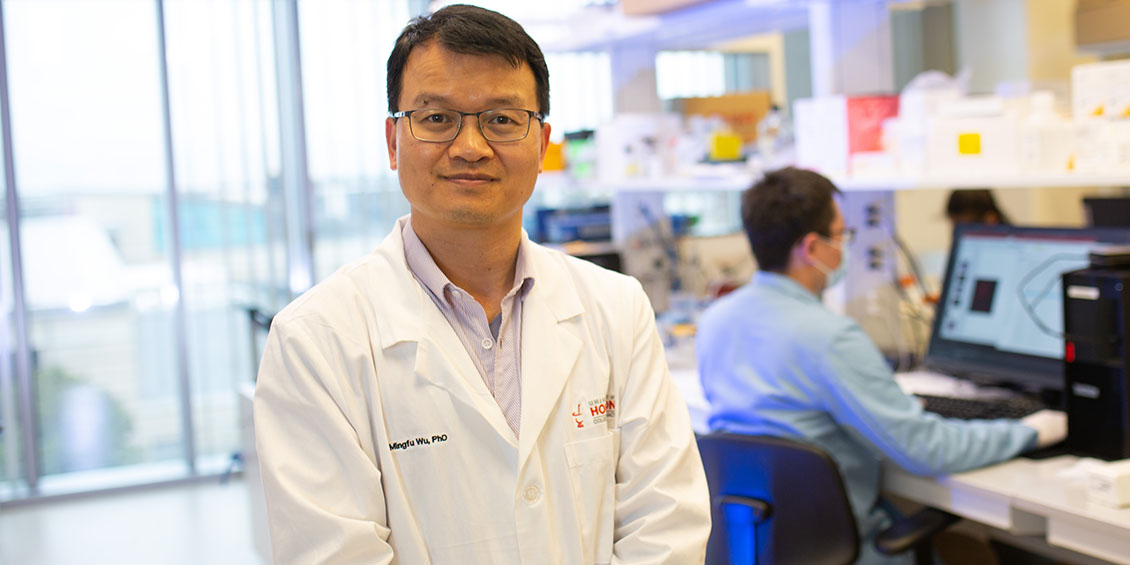Research News
A Winning Observation
Wu Receives AHA Established Investigator Award for Research into Embryonic Cardiac Cell Signaling
June 3 – Mingfu Wu, Ph.D., associate professor of pharmacology, has been selected for an Established Investigator Award from the American Heart Association (AHA) to advance his research into “communication highways” of the embryonic heart. The award, which includes a five-year, $550,000 research grant, supports mid-career investigators with “unusual promise and an established record of accomplishments.”
One aim of Wu’s laboratory is to explore methods of treating congenital heart defects, including understanding how the heart’s layers develop and communicate during early heart formation in utero. The heart’s muscle cells are called cardiomyocytes (CMs) and are the primary cells responsible for the heart's pumping action, driving blood through the circulatory system. Endocardial Cells (ECs) form the innermost layer of the heart wall. While examining mouse cardiac muscle under the microscope to investigate heart development, Wu noticed something that appeared to be tubes. This is where his research took a turn, and his eventual discovery began.
Tunneling nanotube–like structures (TNTLs), also known as “nanotubes,” connected the layers of the heart. TNTLs extended from CMs to contact ECs directly. TNTLs transported cytoplasmic proteins, transduced signals between CMs and ECs, and initiated myocardial growth toward the heart lumen (open space or cavity within the great vessels and chambers where blood flows) to form ventricular trabeculae-like structures.
Trabeculae are ridgelike structures that make up the ventricular walls and transport oxygen and nutrients to the heart muscle in the early stages of an embryo’s life. Communication between the heart’s layers is not just important for forming the trabeculae, it’s critical to survival. Unformed trabeculae can lead to the death of the embryo.
“Nanotubes were found in a cultured dish, but nanotubes in mammals have not been reported before,” Wu said. “We hypothesize that TNTLs link the endocardium and myocardium and facilitate signaling interactions and cytoplasmic protein transfer between ECs and CMs across the cardiac jelly in vivo.”
Wu’s research aims to provide insights into mechanisms of cellular communication and suggests that TNTL formation might help cells to regulate long-distance cell-cell communication and modulate tissue patterning in mammalian systems. Yet, many questions remain, including the mechanisms enabling these long-distance interactions across the intervening cardiac jelly.
“Moving forward, our research will focus on determining whether specialized junctions exist between TNTLs and ECs, evaluating the interaction of signaling molecules at these contacts, and understanding how peptides and small molecules traverse the contacts in vivo,” Wu said.
- Kristin Marie Mitchener
